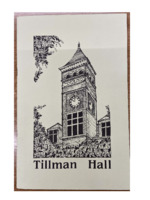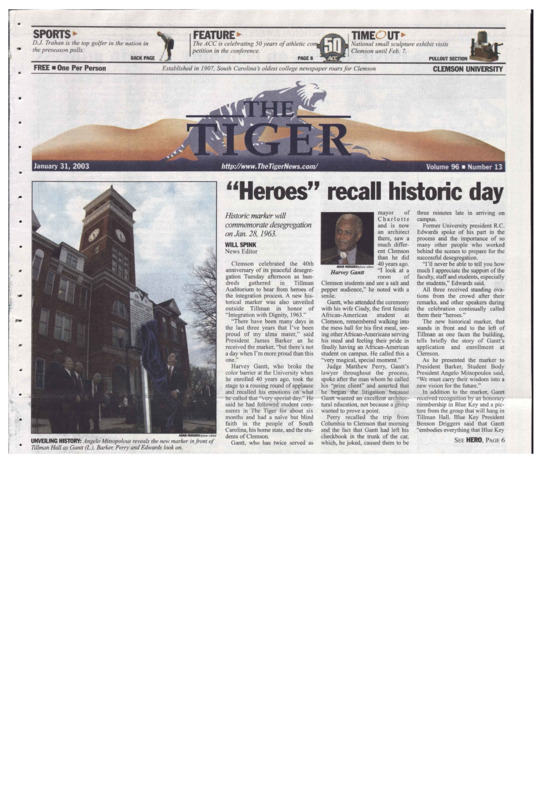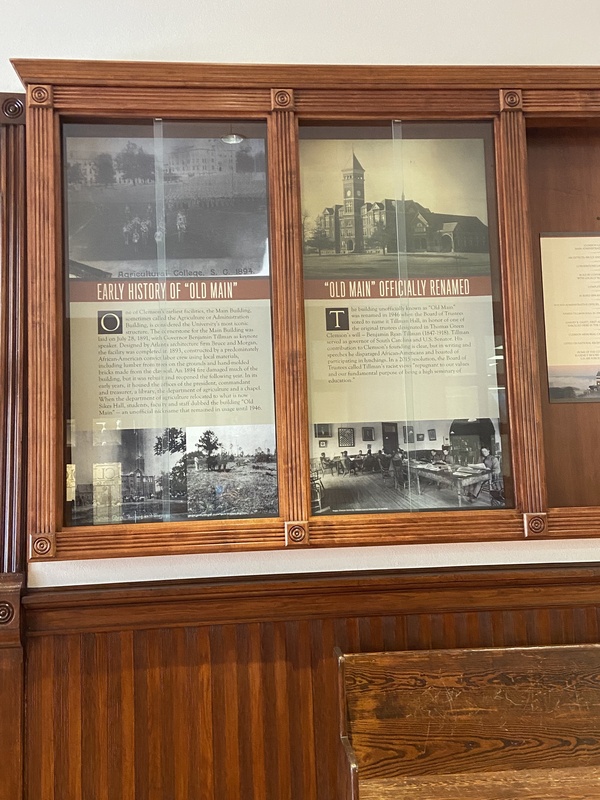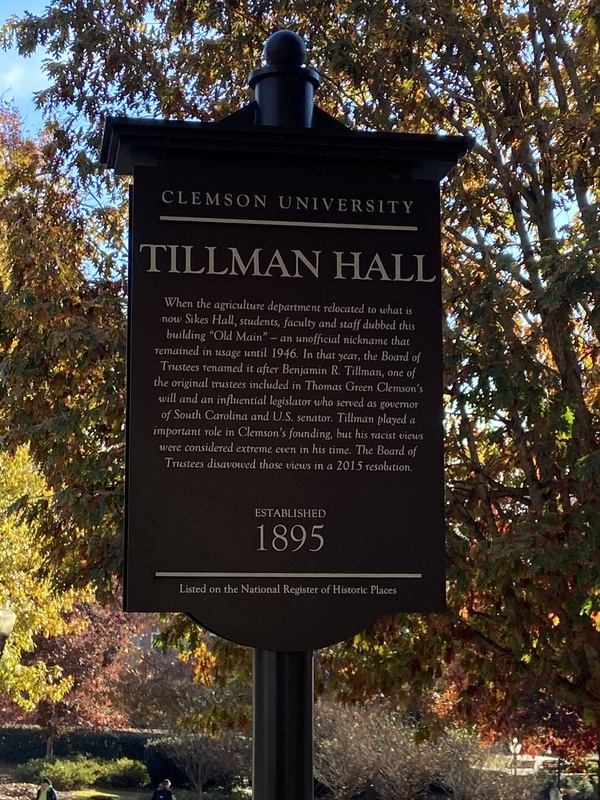Legacy
Since the name change of Tillman Hall in 1946 the sentiments of praise for Tillman lasted for many years.There was a source from 1978 about Tillman Hall’s history and it honors Tillman in the 1946 fashion of heritage. He is praised for distinguishing himself for his vision in politics for the post war south and the work for Clemson’s College. This “glorious vision” just happened to include disenfranchising African Americans, and creating legislation for segregation of South Carolina. In Pitchfork Ben Tillman, Simkins shows that Tillman also stood for lynching and in his youth took part in the red shirts during the election of 1875 to help return to “Home Rule” in the south by threatening violence against any African American man who dared step foot in a voting booth. Was this the man that Clemson wanted to glorify, or just the half of him who was the reason for South Carolina’s agricultural college?
For the sentiments talked about in the previous section is why Tillman Hall has been brought into question. The movement to rename buildings because of the current name glorifies people with racist pasts is not a unique phenomenon to Clemson’s campus alone. For example, this same thing happened on Oklahoma State campus with the renaming of Murray Hall, a building named after “Alfalfa Bill” Murray, a politician who did much for the state of Oklahoma by working on behalf of farmers. White farmers, that is. He was of the “separate,but equal” mentality that Tillman was and made it clear that popular democracy in Oklahoma did not include African Americans(Bill 15).
The calls to remove Murray’s name came in 2002, much earlier than Tillman’s on Clemson’s campus in 2015. Note in Clemson Trustees’s minutes from 2015 they acknowledge Tillman's racist past, but do not make a motion to rename the building. The decision to remove Tillman’s name has been under much debate and in the initial years of objection Clemson’s task force assigned by the board of Trustees refused to rename the building in 2016. Note the reasons for their objections is that it would be difficult to rename the building because of the stipulations of the Heritage Act of 2000. This fact ties the renaming of buildings back to the idea of heritage and how it can be a powerful notion to deal with.
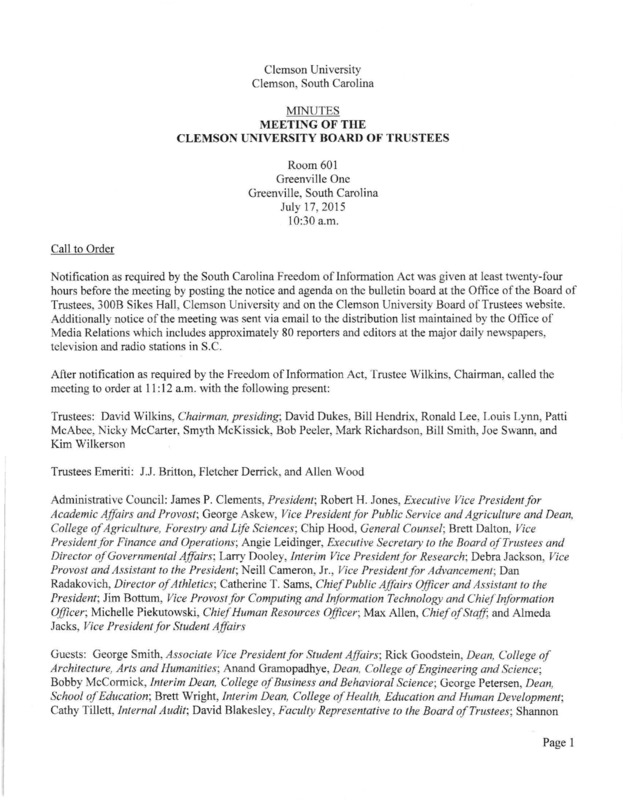
Clemson Trustees Minutes Tillman Hall objections 2015
See bottom of page 2-4 to see what is said about Tillman Hall.
In 2021 the tune of Clemson’s officials started to change under the pressure of the country’s reaction to Geroge Floyd’s death and the resurgence of Black Lives Matter protests all over America. The University itself has started referring to the hall as Old Main, but it has not been officially changed due to the fact that it has to be approved by the South Carolina General Assembly under the Heritage Act of 2000. Notice the source about Tillman Hall awaiting name change to get a student’s personal opinion of how Tillman hall makes them feel and also faculty’s views on the building name.
What will become of Tillman Hall? Will the strong ties of heritage make it so that it will remain or will there be a new movement to change the narrative? This was the building where Clemson’s first African American student registered for classes in 1963 and led to the desegregation of the school. Will the name of Tillman Hall remain as a symbol of hatred against African Americans or will it be removed? For right now heritage continues to win out in honoring the colorful Benjamin Ryan Tillman, a key Clemson College Founder,South Carolina statesman, and a man who fought against the rights of African Americans.
